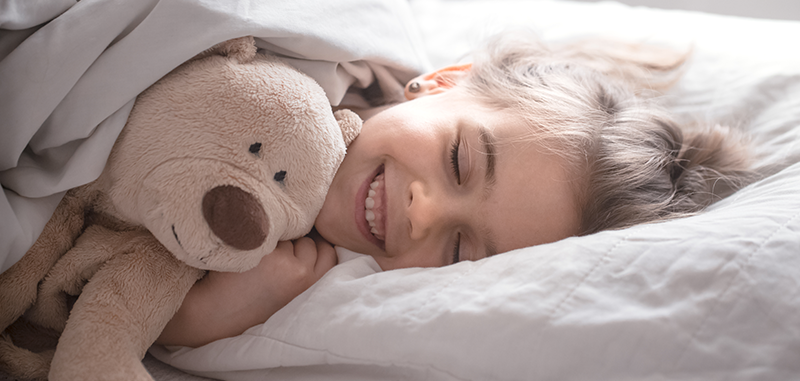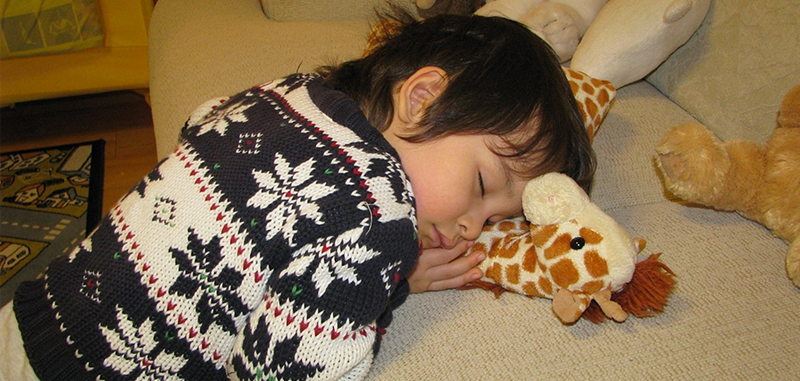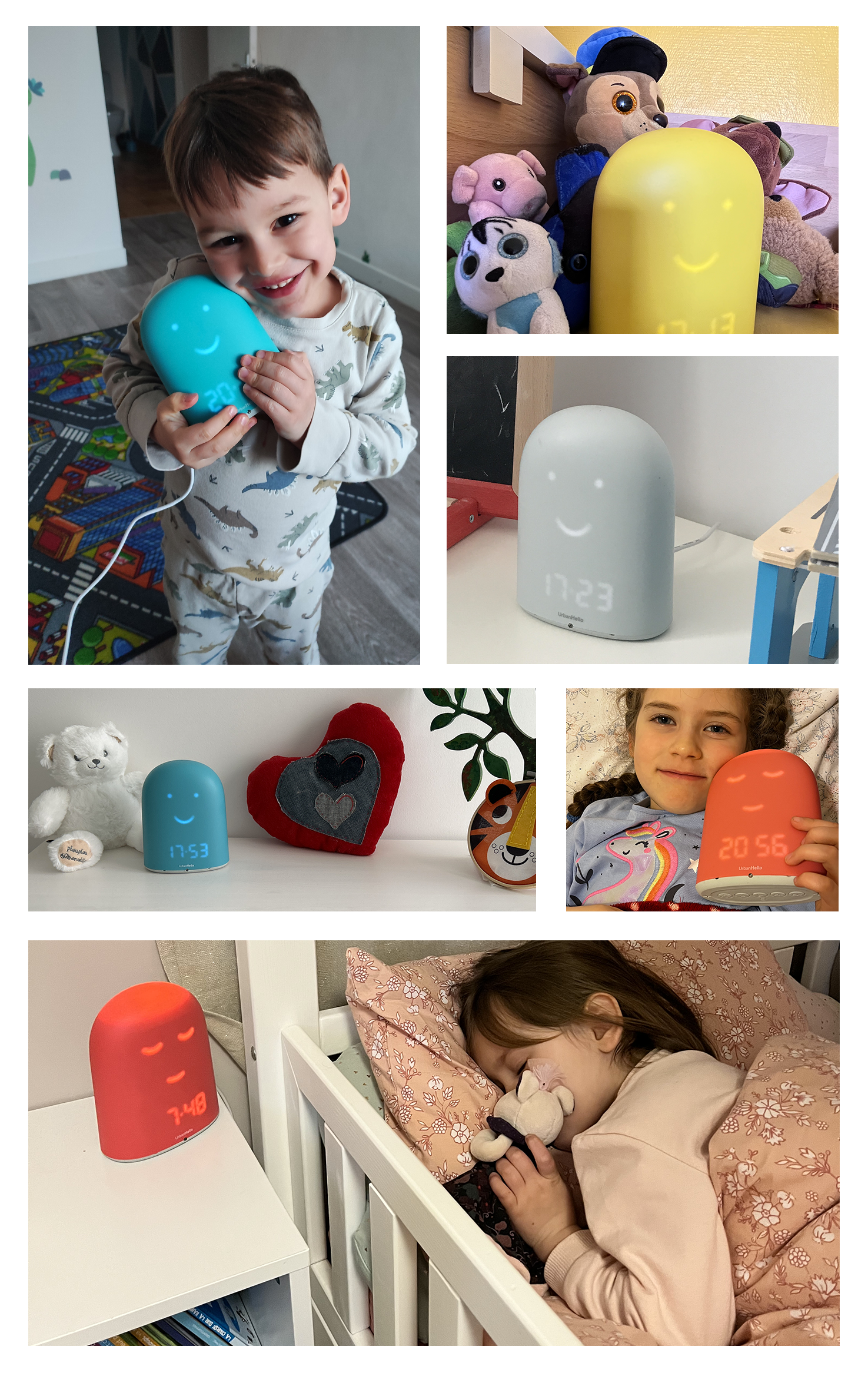What Time Should Your Child Go to Bed? The Ideal Bedtime by Age!

What time should your child go to bed for a good night’s sleep? It’s a question many parents ask—and for good reason. Sleep plays a vital role in your child’s health, well-being, and overall development. Getting enough rest isn’t just about taking a break—it’s a key foundation that directly affects mood, learning ability, and physical growth.
Figuring out the right bedtime can feel overwhelming. Between age-specific needs, the family’s daily routine, and your child’s unique sleep patterns, how can you make the right call? In this article, we’ll share clear guidelines to help you determine the ideal bedtime, based on age, signs of tiredness, and individual needs.
Did you know that a scientific study found that children who go to bed before 9:00 p.m. sleep an average of 1 hour and 15 minutes longer each night? That extra rest makes a real difference: well-rested kids are generally calmer, learn more effectively, and enjoy better overall health.
Our goal is to guide you step by step to find the bedtime that works best for your child—and for the balance of your entire family.
How to Determine the Ideal Bedtime by Age
To grow well, stay energized, and face each day with confidence, children need to get the right amount of sleep for their age. Sleep needs naturally change as they grow, and meeting those needs is essential for healthy development. The World Health Organization (WHO) recommends the following sleep durations:
- 0 to 2 months: 16 to 20 hours of total sleep per day, including 9–12 hours at night
- 3 months to 2 years: 14 to 18 hours of sleep per day, with 10–13 hours at night
- 3 to 5 years: 11 to 14 hours of sleep daily, including 11–13 hours at night
- 6 to 12 years: 9 to 12 hours of sleep at night
- 13 to 18 years: 8 to 10 hours of sleep at night
How to Calculate the Ideal Bedtime
Bedtime is calculated based on your child’s wake-up time. For example, if your 4-year-old needs to wake up at 7:30 a.m., they should go to bed between 6:30 and 9:00 p.m. to get the recommended 11 to 14 hours of sleep.
Here are a few key things to keep in mind when adjusting your child’s bedtime:
Account for falling asleep time
On average, it takes a child around 30 minutes to fall asleep. So it’s best to put them to bed 30 minutes before you want them to actually be asleep.Earlier than 9:00 p.m. for younger kids
For children aged 7–8 and under, going to bed before 9:00 p.m. is always recommended (even if they can sleep in the next morning!) to ensure quality sleep and prevent overtiredness.Watch for signs of tiredness
Every child is unique, so beyond general guidelines, it’s important to stay alert to signs of fatigue. Yawning, a drop in body temperature, or irritability often signal that it's time for bed. Conversely, if your child is well-rested and energetic during the day, that usually means their current sleep schedule is working well.
To help you out, the bedtime sleep chart below shows recommended bedtimes based on two common weekday wake-up times (6:30 a.m. and 7:30 a.m.). These are average suggestions to guide parents in setting a healthy routine.
| 🧒 Age | ⏰ Total Sleep Over 24 Hours | 🌙 Nighttime Sleep | 🕒 Bedtime if Wake-Up is 6:30 a.m. | 🕒 Bedtime if Wake-Up is 7:30 a.m. |
|---|---|---|---|---|
| 0–1 month | 16–20 hrs Frequent naps |
8–10 hrs Interrupted by feedings |
N/A* | N/A* |
| 2–3 months | 15–18 hrs 3 to 6 naps |
9–12 hrs Interrupted by feedings |
N/A* | N/A* |
| 4–7 months | 14–18 hrs 3 to 4 naps |
10–13 hrs May wake 0–3 times for feeding |
6:30 – 7:00 p.m. | 7:00 – 7:30 p.m. |
| 8–14 months | 13–17 hrs 2 naps |
10–13 hrs Uninterrupted night |
6:30 – 7:00 p.m. | 7:00 – 7:30 p.m. |
| 15–23 months | 13–16 hrs 1–2 naps |
10–13 hrs Uninterrupted night |
7:30 – 8:00 p.m. | 8:00 – 8:30 p.m. |
| 2–3 years | 12–16 hrs 1 nap |
11–13 hrs Uninterrupted night |
7:30 – 8:00 p.m. | 8:00 – 8:30 p.m. |
| 3–5 years | 11–14 hrs 0–1 nap |
11–13 hrs Uninterrupted night |
7:30 – 8:30 p.m. | 7:30 – 8:30 p.m. |
| 6–12 years | 9–12 hrs 0–1 nap |
9–12 hrs Uninterrupted night |
7:30 – 9:00 p.m. | 8:30 – 9:15 p.m. |
| 13–18 years | 8–10 hrs 0–1 nap |
8–10 hrs Uninterrupted night |
8:30 – 10:00 p.m. | 9:00 – 10:30 p.m. |
* Bedtime and wake-up times are not listed for babies under 3 months, as they generally aren’t able to sleep through the night yet (6+ hours in a row).
Even one or two nights of disrupted sleep can throw off your child’s internal clock and lead to accumulated fatigue. For example, on weekends or non-school days, families may be tempted to allow later bedtimes and sleep-ins. However, these shifts in schedule can make it harder for kids to settle back into their routine, especially on school nights.
Some children need more sleep, while others feel well-rested with a bit less. Understanding these individual differences is key to setting a personalized bedtime routine. If your child seems alert, happy, and energetic during the day, their current sleep schedule is likely a good fit.
Every family has its own pace, routines, and daily challenges. It’s important to find solutions that work within your reality. Whether it’s late dinners, after-school activities, or other commitments, the most important thing is to tune in to your child’s needs and gradually work toward a sleep rhythm that suits them. Remember: every family is doing their best, and finding a balanced routine is already a big step toward better sleep for everyone!
Why Is It Better for Kids to Go to Bed Early?
👉 The Benefits of a Bedtime Before 9:00 p.m.
Quality sleep is essential for children to feel good—both physically and emotionally. Research has clearly shown the powerful impact of healthy sleep on children’s physical and mental well-being. In the sections below, we’ll explore the many advantages of an age-appropriate bedtime—from better mood and emotional balance to healthy weight regulation and stronger cognitive development. Consistent, sufficient sleep is truly a foundation for your child’s growth and overall happiness.
It showed that babies who go to bed after 9:00 p.m. take longer to fall asleep and get less total sleep overall. On average, those put to bed before 9:00 p.m. sleep up to 1 hour and 20 minutes longer each night!
Contrary to popular belief, a child who goes to bed late won’t necessarily wake up later. In fact, going to bed too late can reduce the quality of their rest and negatively affect their mood and well-being throughout the day.
A study from the University of Georgia, for instance, found that kids who don’t get enough sleep—or who take more than 30 minutes to fall asleep—exhibit more impulsive behaviors. This impulsivity can show up as low persistence or a stronger need for stimulation—patterns seen even in very young children. It highlights just how important sleep is for emotional and behavioral development.
Encouraging an earlier bedtime can significantly support emotional self-regulation, helping kids manage their mood and respond more calmly to everyday challenges.
Studies show that children who go to bed just one hour earlier have not only better short-term memory but also improved focus and attention. For example, the study "Manipulating Sleep Duration Alters Emotional Functioning and Cognitive Performance in Children" – Vrien, J. et al. (2013) found that earlier bedtimes were associated with stronger cognitive function.
In addition, getting enough sleep helps kids stay focused, which lowers the risk of developing attention disorders as they grow. In fact, short or irregular sleep during early childhood can increase the likelihood of attention and behavioral difficulties later in life. By encouraging consistent and age-appropriate bedtimes, you’re supporting your child’s cognitive development—helping them succeed in school and build healthier relationships with others.
Sleep deprivation can affect key hormones such as leptin and ghrelin, which play an essential role in appetite control and energy balance.
👉 Debunking the Myth of the “Catch-Up Sleep” Morning
A common belief among new parents is that putting a child to bed later will lead to a “restorative sleep-in” the next morning. In reality, research shows that delaying a child’s bedtime does not result in longer sleep—and can actually lead to shorter, lower-quality sleep overall. Children who go to bed late are often more tired, as their bodies begin producing cortisol and other stress hormones in response to sleep deprivation. This can interfere with falling asleep and reduce deep sleep, often causing earlier-than-expected wake-ups.
Moreover, kids who go to bed late usually don’t make up for the lost sleep. Instead, they may develop a “sleep debt” that can negatively affect their long-term health. Maintaining consistent sleep and wake times is far more beneficial, promoting higher sleep quality and supporting healthy development.

Understanding Your Child’s Sleep Profile
👉 What Is a Chronotype?
Just like adults, children have different biological preferences for sleep and wake times, known as chronotypes. These sleep profiles evolve throughout childhood and tend to stabilize around age 6. From their earliest months, most young children naturally lean toward being “morning types.”
Children with a morning chronotype tend to fall asleep and wake up early, while evening chronotypes are naturally more alert later in the day and prefer sleeping in. While these tendencies are partly biologically driven, they are also shaped by family habits and a consistent environment.
As children grow, their chronotype may shift, often leaning toward a later sleep schedule during adolescence. Around age 19, teens typically reach a peak preference for later bedtimes—before gradually returning to earlier rhythms with age. This shift reflects both physiological needs and social/family routines that help align sleep habits with each child’s natural rhythm.
If you want to explore chronotypes further, check out our dedicated article featuring the four chronotype categories developed by sleep expert Dr. Michael Breus. Knowing your child’s chronotype can help you better understand their natural rhythm and adjust routines accordingly. The article includes a quick 5-minute quiz to find out whether your child fits a typical sleep profile—such as a Bear, Wolf, or Lion. Read more in our article on children’s chronotypes here.
Recognizing the Key Signs of Tiredness
Some early signs of tiredness are quite common and can appear even at the start of fatigue:
- Frequent yawning
- Chills or a drop in body temperature
- Mood changes: irritability or unexplained crying
- Rubbing of eyes or ears
- Clumsiness or reduced coordination
More intense signs can appear once a child has been overtired for a while, making it harder for them to fall asleep easily:
- Hyperactivity or seeming overly excited (which may actually signal exhaustion)
- Trouble concentrating or disinterest in usual activities
One common misconception is thinking that this late-evening energy burst means the child isn't tired—when in fact, it often indicates that their ideal bedtime has already passed. A child who is overly stimulated at night may have more trouble falling and staying asleep.
Observe to Find the Ideal Bedtime
To fine-tune your child’s bedtime, start by observing signs of tiredness between 6:30 p.m. and 9:00 p.m. over a few days. Signals like yawning, rubbing eyes, or restlessness are valuable clues that help you identify the most suitable bedtime based on their physiological needs. As bedtime approaches, these signs often become clearer—slower movements, a slight rise in body temperature, or impulsive behaviors may all indicate that it’s time to sleep.
Using a sleep journal or observation chart can be extremely helpful. Each evening, jot down sleep times, fatigue signs, and wake-up times. After just a few days, you’ll begin to see a pattern that helps you pinpoint the ideal bedtime for deep, restorative sleep. For more tips, check out our complete guide to using a sleep log.
This thoughtful approach allows you to gently adjust your child’s sleep schedule for better-quality rest—and more peaceful days for both of you. A well-rested child wakes up easily, stays in a good mood, and is full of energy to take on the day ahead with enthusiasm.
Online Sleep Calculator for Babies and Children!

How to Move Bedtime Earlier?
Shifting your child’s bedtime gradually is key to avoiding tossing, turning, or lying awake in bed. The secret is to make small adjustments, giving their biological rhythm time to adapt. Here’s a simple and effective method to help make the change:
- Track their current average sleep time: Over a few days, observe when your child naturally falls asleep. This will serve as your starting point.
- Set a new sleep goal: Choose the target time you'd like your child to fall asleep, remembering that it typically takes around 30 minutes to fall asleep once in bed.
- Move bedtime earlier gradually: Help their body adjust by moving bedtime earlier by 15 minutes every 3 days. This step-by-step approach prevents resistance or restlessness at bedtime.
- Continue for about 10 days: Using this method, you can shift bedtime by up to one hour in just 10 days.
- Keep wake-up time consistent: During this adjustment period, it’s important to wake your child at the same time every day—even on weekends. A regular wake-up time helps reset their internal clock and supports a stable sleep pattern.
By gradually moving bedtime earlier and sticking to a consistent schedule, you’ll give your child the best chance to develop a healthy, restorative sleep rhythm.
Studies show that just one extra hour of natural light exposure can help children fall asleep up to 30 minutes earlier. So, planning a daily outdoor activity—especially late morning or early afternoon—can go a long way in resetting your child’s internal clock and encouraging more restful nights.
Discover REMI
THE SMART ALARM CLOCK 😊
REMI and its app bring together everything you need to manage your baby’s sleep!
Its mission? Helping families sleep better — from birth up to age 10.
I bought REMI for my 4-year-old son who didn’t want to sleep alone anymore after his little sister was born. Thanks to the remote wake-up system and bedtime stories I can play from a distance, the issue is completely resolved! I 100% recommend this purchase!






 My Child Won’t Sleep Alone: How to Help Them Gain Independence
My Child Won’t Sleep Alone: How to Help Them Gain Independence
 Letting Baby Cry It Out: Effective, But At What Cost?
Letting Baby Cry It Out: Effective, But At What Cost?
 White noise for baby : a scientific research !
White noise for baby : a scientific research !
 What are the positive effects of napping on memory?
What are the positive effects of napping on memory?
 What Time Should Your Child Go to Bed? The Ideal Bedtime by Age!
What Time Should Your Child Go to Bed? The Ideal Bedtime by Age!